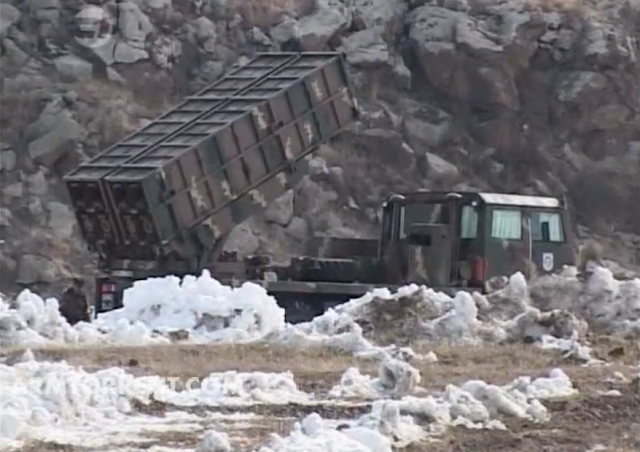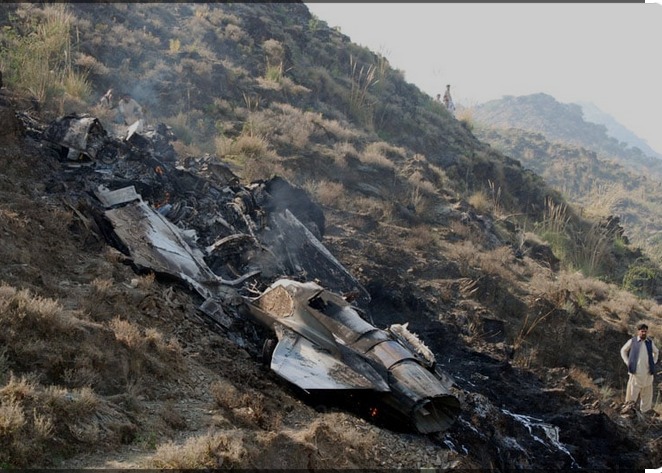A China-made K-8 trainer aircraft, operating as part of Sri Lanka’s military fleet, tragically crashed during a routine training flight. The crash occurred near Puttalam, leaving officials and the public questioning the safety and reliability of the aircraft. Another famous or we should say infamous fact known worldwide : “China supplied WM-80 multiple launch rocket systems – Armenia’s most failed weapon in the battle for Karabakh“. This is the reality of China supplied weapons.

The recent past has made China a hero to the weapons selling industry, supplying a growing number of developing countries with military hardware. However, there have been rising concerns about the quality, reliability, and long-term sustainability of the weapons provided by China, especially in countries that are heavily dependent on Chinese supplies.
According to recent data from the Stockholm International Peace Research Institute (SIPRI), China accounts for a significant portion of Pakistan’s arms imports, at 81% between 2020 and 2024, up from 74% in previous years. This relationship reflects China’s growing dominance in the region, particularly with advanced equipment such as submarines, drones, fighter jets, and tanks.
Other countries like Nigeria, Myanmar, Bangladesh, Nepal, Sudan, Bolivia and many more rejected countries from west have turned to China for military supplies. While many of these countries are looking for cost-effective alternatives to Western arms, China’s arms exports to these regions are often plagued by poor quality control, malfunctioning systems, and the absence of long-term support services.
Challenges Faced by Countries Purchasing Chinese Weapons
-
Quality Control Issues:
Pakistan’s F-22P Frigates: These frigates, designed and built by China, encountered numerous technical issues, including defective infrared sensors and SR-60 radar failures. This malfunctioning equipment severely undermined the effectiveness of the frigates, limiting Pakistan’s operational capabilities. The F-22P frigates experienced major engine defects, including high turbocharger exhaust temperatures, which led to engine degradation and oil deterioration, requiring costly repairs and reducing operational efficiency. In addition to engine defects, other components such as radar systems and Sonar units have shown erratic performance across Chinese-built ships, leading to concerns about the longevity and effectiveness of the hardware.
The Chinese-supplied WL II UCAVs was grounded within days of induction into the PAF due to serious defects. A similar story has emerged with the joint production JF-17 fighters.

- Nigeria’s F-7 Aircraft: Nigeria reported persistent technical issues with Chinese-made F-7 aircraft, including crashes and frequent repairs, with much of the fleet being sent back to China for maintenance. This created logistical headaches and delayed the military’s modernization efforts.
- Chinese weapons often face compatibility issues with other international equipment. For example, the JF-17 aircraft sold to Myanmar has poor radar accuracy and lacks critical features such as beyond-visual-range missiles, severely limiting its combat capabilities.
-
Support and Maintenance Issues: Many developing nations, such as Myanmar and Pakistan, have struggled with maintenance and repair due to limited expertise in handling Chinese military hardware. China has faced significant criticism for its inadequate after-sales service to countries that have purchased its military hardware. Despite aggressively expanding its global arms sales, China has struggled to provide reliable maintenance, technical support, and spare parts to its customers, leaving many nations frustrated with their investments. Military officials from several African and Asian countries have reported extended equipment downtime when Chinese-made systems malfunction, as technical expertise is often difficult to access and replacement components can take months to arrive. This service gap has damaged China’s reputation in the international arms market, with some countries returning to traditional suppliers despite higher initial costs, recognizing that weapon system reliability throughout the operational lifecycle ultimately provides better value than China’s lower upfront pricing but unreliable support structure.
Why Do Poor Countries Choose China?
Despite the obvious issues with Chinese weapons, developing countries 17 continue to purchase military hardware from China for several reasons:
- Affordability: China’s weapons are significantly cheaper than Western alternatives. This affordability is attractive to low-budget countries, especially those facing ongoing security threats or engaged in counter terrorism operations. Countries in Africa, South Asia, and Latin America have particularly benefited from the low cost of Chinese military equipment.
- Political Flexibility: Unlike Western suppliers, China does not impose political conditions on military sales. This makes Chinese arms an appealing option for countries with controversial human rights records or those seeking to avoid political interference in defense dealings. As a result, countries rejected by Western suppliers automatically became attracted to China.
- Lack of Alternatives: Russia’s involvement in the Ukraine war has affected its capabilities to supply arms to its buyer countries and China has taken advantage of that. For many developing nations, Western countries are either unwilling to sell advanced equipment due to political considerations, or the prices are simply too high. As such, China fills the void, offering weapons with minimal political strings attached.
- Diversification of Suppliers: Some countries seek to diversify their arms suppliers to avoid dependence on a single nation. By purchasing from China, they can reduce their reliance on traditional suppliers like the United States or Russia.
Impact on Long-term Military Capabilities
While Chinese military equipment provides short-term relief to developing countries seeking low-cost alternatives, the long-term impact can be detrimental:
- Operational Failures: As seen with Pakistan’s frigates and aircraft, the long-term operational reliability of Chinese equipment is often questionable. The consistent need for repairs, replacements, and technical expertise leads to prolonged downtime and increased military spending, negating the initial cost savings.
- Loss of Strategic Autonomy: Countries like Pakistan have become heavily reliant on Chinese weapons, which limits their strategic autonomy. This reliance on one supplier could force countries to align with China’s geopolitical interests, potentially undermining their ability to engage with other global powers independently.
- These countries must weigh the short-term benefits against the long-term risks of relying on Chinese military hardware.
While China’s role in the global arms market continues to grow, its reputation for subpar quality control and lack of accountability may limit its ability to expand beyond its core alliances. For many developing countries, the choice to buy from China is driven by economic necessity, but it comes with the risk of operational failure and increased costs over time.
China’s arms sales to developing countries may not be as altruistic as they seem. While these nations are enticed by the affordability and lack of political conditions tied to Chinese weapons, the reality is far more concerning. The equipment often proves to be substandard, with frequent malfunctions and defects that compromise operational efficacy. The true agenda behind these sales is not simply financial profit but a calculated geopolitical strategy. China positions itself as a savior when these countries struggle with unreliable weapons, offering repairs, upgrades, and more advanced systems in exchange for greater influence. Over time, nations grow increasingly dependent on Chinese military support, causing their sovereignty and autonomy to erode. What begins as a seemingly benign arms deal transforms into a systematic takeover, with China establishing itself as the dominant power—both militarily and politically—ultimately controlling these nations’ fate.

